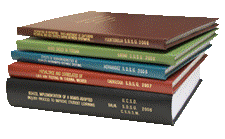Libraries at University of Nebraska-Lincoln

Archival Master’s Theses from the University of Nebraska-Lincoln
Date of this Version
8-1971
Document Type
Thesis
Citation
Thesis (M.S.)—University of Nebraska—Lincoln, 1971. Department of Agronomy.
Abstract
The objectives of this research were (a) to study yield effects of fall applied anhydrous ammonia on irrigated corn along with type and amount of nitrogen losses; (b) to evaluate the effects of ‘N-Serve’ on fertilizer nitrogen conservation in soil; (c) to evaluate liming in relation to nitrogen conservancy in slightly acid soils; and (d) to investigate other means for improving utilization of applied nitrogen while minimizing losses that could cause pollution.
A field study using 2-Chloro-6-(Trichloro-Methyl) Pyridine, ‘N-Serve’, with anhydrous ammonia and lime was established in the fall of 1969 at the University of Nebraska Mead Field laboratory. The experimental sites were located on a Sharpsburg silty clay loam and an Ortello loamy fine sand. These soils were medium to slightly acid.
A completely randomized block design with slip plot treatment arrangement was employed. The plain plots consisted of 0, 75, 150, and 225 pounds per acre rates of anhydrous ammonia. Each main plot, also, consisted of 0, 1.5 and 3 ton per acre rates of lime on the Ortello site and 0, 2, and 4 ton per acre rates on the Sharpsburg. Each treatment was replicated four times at each site. Each main plot contained two subplots of anhydrous ammonia with and without ‘N-Serve’. Anhydrous ammonia with and without ‘N-Serve’ was applied in mid-November using injector knives 8 to 9 inches deep. “N- Serve’ (23% active ingredient xylene solution) at the rate of 0.2 % of the weight of applied nitrogen as placed into the application tank prior to addition of the anhydrous ammonia. Lime was spread using a seed applicator and immediately disked to a depth of 3 inches. A high yielding corn hybrid, Pioneer 3306, was planted in 30 inch rows the last week of April.
Soil samples were taken on plots containing nitrogen treatments only in mid-April to a depth of 18 inches by 6 inch increments.Soil probes were made across here injector knife positions at 5 inch spacings.Samples equal distant from the zone of application were composited.In mid-June, soil samples were repeated on the plots sampled in April, also on plots with high nitrogen rates and medium and high rates of lime. After the crop was harvested, soil samples were taken on all plots to a depth of 6 feet by one foot increments with the top foot being split into 6 inch increments.
Advisor: R. A. Olson

Comments
Copyright 1971, the author. Used by permission.